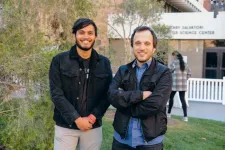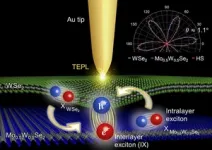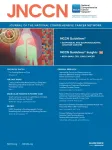(Press-News.org) Humans have a way of understandings others’ goals, desires and beliefs, a crucial skill that allows us to anticipate people’s actions. Taking bread out of the toaster? You’ll need a plate. Sweeping up leaves? I’ll grab the green trash can.
This skill, often referred to as “theory of mind,” comes easily to us as humans, but is still challenging for robots. But, if robots are to become truly collaborative helpers in manufacturing and in everyday life, they need to learn the same abilities.
In a new paper, a best paper award finalist at the ACM/IEEE International Conference on Human-Robot Interaction (HRI), USC Viterbi computer science researchers aim to teach robots how to predict human preferences in assembly tasks, so they can one day help out on everything from building a satellite to setting a table.
“When working with people, a robot needs to constantly guess what the person will do next,” said lead author Heramb Nemlekar, a USC computer science PhD student working under the supervision of Stefanos Nikolaidis, an assistant professor of computer science. “For example, if the robot thinks the person will need a screwdriver to assemble the next part, it can get the screwdriver ahead of time so that the person does not have to wait. This way the robot can help people finish the assembly much faster.”
But, as anyone who has co-built furniture with a partner can attest, predicting what a person will do next is difficult: different people prefer to build the same product in different ways. While some people want to start with the most difficult parts to get them over with, others may want to start with the easiest parts to save energy.
Making predictions
Most of the current techniques require people to show the robot how they would like to perform the assembly, but this takes time and effort and can defeat the purpose, said Nemlekar. “Imagine having to assemble an entire airplane just to teach the robot your preferences,” he said.
In this new study, however, the researchers found similarities in how an individual will assemble different products. For instance, if you start with the hardest part when building an Ikea sofa, you are likely to use the same tact when putting together a baby’s crib.
So, instead of “showing” the robot their preferences in a complex task, they created a small assembly task (called a “canonical” task) that people can easily and quickly perform. In this case, putting together parts of a simple model airplane, such as the wings, tail and propeller.
The robot “watched” the human complete the task using a camera placed directly above the assembly area, looking down. To detect the parts operated by the human, the system used AprilTags, similar to QR codes, attached to the parts.
Then, the system used machine learning to learn a person’s preference based on their sequence of actions in the canonical task.
“Based on how a person performs the small assembly, the robot predicts what that person will do in the larger assembly,” said Nemlekar. “For example, if the robot sees that a person likes to start the small assembly with the easiest part, it will predict that they will start with the easiest part in the large assembly as well.”
Building trust
In the researchers’ user study, their system was able to predict the actions that humans will take with around 82% accuracy.
“We hope that our research can make it easier for people to show robots what they prefer,” said Nemlekar. “By helping each person in their preferred way, robots can reduce their work, save time and even build trust with them.”
For instance, imagine you’re assembling a piece of furniture at home, but you’re not particularly handy and struggle with the task. A robot that has been trained to predict your preferences could provide you with the necessary tools and parts ahead of time, making the assembly process easier.
This technology could also be useful in industrial settings where workers are tasked with assembling products on a mass scale, saving time and reducing the risk of injury or accidents. Additionally, it could help persons with disabilities or limited mobility to more easily assemble products and maintain independence.
Quickly learning preferences
The goal is not to replace humans on the factory floor, say the researchers. Instead, they hope this research will lead to significant improvements in the safety and productivity of assembly workers in human-robot hybrid factories. “Robots can perform the non-value-added or ergonomically challenging tasks that are currently being performed by workers.
As for the next steps, the researchers plan to develop a method to automatically design canonical tasks for different types of assembly task. They also aim to evaluate the benefit of learning human preferences from short tasks and predicting their actions in a complex task in different contexts, for instance, personal assistance in homes.
“While we observed that human preferences transfer from canonical to actual tasks in assembly manufacturing, I expect similar findings in other applications as well,” said Nikolaidis. “A robot that can quickly learn our preferences can help us prepare a meal, rearrange furniture or do house repairs, having a significant impact in our daily lives.”
END
Robots predict human intention for faster builds
In a new paper, USC computer science researchers “teach” robots how to predict human preferences in assembly tasks.
2023-04-05
ELSE PRESS RELEASES FROM THIS DATE:
Hot probe tip contributes to making “transformer” semiconductor particles
2023-04-05
How can we make wearable devices like Spiderman’s suit that are thin and soft yet also feature various electrical and optical functionalities? The answer lies in producing novel materials that go far beyond the performance of existing materials and developing technology that enables the precise control of the physical properties of such materials.
Separating transition metal dichalcogenide (TMD) into a single layer just like graphene makes it transform into a thin, two-dimensional (2D) film material that exhibits the characteristics of highly performing semiconductors. By stacking two disparate ...
Series of new studies refute assumptions about link between power and concern about reputation
2023-04-05
Contrary to earlier research findings, people of power - think about politicians, celebrities or bullies in school - turn out to be no less concerned about their reputation, compared to those who have less influence and control within the society.
Previously, it has been assumed that since those who have the upper hand in the society - unlike the ‘powerless’ - are able to get away with commonly unacceptable behaviour (e.g. aggression and exploitation), would care less about any potential damages to their reputation.
However, a recent study by scientists at the University of Kent (United Kingdom) ...
Society matters LIVE: Lab made meat on the menu?
2023-04-04
• Research at Aston University focuses on both creating lab-based meat and its psychological acceptance
• Dr Eirini Theodosiou and Dr Jason Thomas will be speaking at April’s Society matters LIVE event
• Lab made meat on the menu? will take place at Cafe Artum in Hockley Social Club on Thursday 27 April.
Lab made meat will be the topic of the latest Society matters LIVE event from Aston University at Café Artum at Birmingham’s Hockley ...
Students use machine learning in lesson designed to reveal issues, promise of A.I.
2023-04-04
In a new study, North Carolina State University researchers had 28 high school students create their own machine-learning artificial intelligence (AI) models for analyzing data. The goals of the project were to help students explore the challenges, limitations and promise of AI, and to ensure a future workforce is prepared to make use of AI tools.
The study was conducted in conjunction with a high school journalism class in the Northeast. Since then, researchers have expanded the program to high school classrooms in multiple states, including North Carolina. ...
DZIF-project-derived start-up “EBViously“ announces first details of its EBV vaccine candidate
2023-04-04
EBViously, a spin-off from Helmholtz Munich (HMGU), is led by world-leading experts in Epstein-Barr virus biology, genetics, and immunity and was founded to develop a safe and highly effective preventive vaccine against a range of diseases caused by Epstein-Barr virus (EBV), including infectious mononucleosis, immune disorders, multiple sclerosis, and various cancers. The spin-off is based on a project of HMGU supported by the German Center for Infection Research (DZIF). The project leading to the spin-off was co-funded by the DZIF to enable GMP manufacturing ...
Preventing urban flooding in the face of climate change
2023-04-04
Planners have come up with many innovative ways to prevent flooding caused by heavy downpours — from planting rain gardens to installing green roofs.
But in many cases, nothing works quite as well as a simple hole in the ground — a detention basin.
That’s the finding of an analysis by University of Cincinnati geography students in a research collaboration with the Hamilton County Conservation District.
Lead author and UC College of Arts and Sciences doctoral student Man Qi said cities are developing new ways to trap rainwater and direct it where it’s most wanted, especially during droughts. They call these low-impact development practices, which ...
Genome-wide CRISPR screens identify PARP inhibitor sensitivity and resistance in prostate cancer
2023-04-04
Prostate cancer tumors harboring BRCA1/2 mutations are exceptionally sensitive to PARP inhibitors, while genomic alterations in other DNA damage response (DDR) genes are less responsive. To identify previously unknown genes whose loss has a profound impact on PARP inhibitor response, researchers from Dana-Farber Brigham Cancer Center led a multinational effort to perform genome-wide CRISPR-Cas9 knockout screens. The study goal was to inform the use of PARP inhibitors beyond BRCA1/2-deficient tumors and support reevaluation ...
Aston University biomass expert calls for more exploration of power bioenergy with carbon capture and storage
2023-04-04
Professor Patricia Thornley welcomes latest UK energy security plans
But calls for more exploration of bioenergy with carbon capture and storage
She believes plans shouldn’t concentrate solely on energy such as wind and solar power.
A leading biomass scientist at Aston University has welcomed the government’s announcement to ensure UK energy is more secure.
However, Professor Patricia Thornley, director of Aston University’s Energy and Bioproducts Research Institute (EBRI), believes the government ...
DMI allows magnon-magnon coupling in hybrid perovskites
2023-04-04
An international group of researchers has created a mixed magnon state in an organic hybrid perovskite material by utilizing the Dzyaloshinskii–Moriya-Interaction (DMI). The resulting material has potential for processing and storing quantum computing information. The work also expands the number of potential materials that can be used to create hybrid magnonic systems.
In magnetic materials, quasi-particles called magnons direct the electron spin within the material. There are two types of magnons – optical and acoustic – which refer to the direction of their spin.
“Both optical and acoustic magnons propagate ...
New study in JNCCN identifies approach for improving end-of-life conversations for people with cancer
2023-04-04
PLYMOUTH MEETING, PA [April 4, 2023] — New research in the April 2023 issue of JNCCN—Journal of the National Comprehensive Cancer Network finds that specially trained oncology infusion room nurses can improve advance care planning (ACP) for patients with advanced cancer. In this study, oncology nurses underwent an immersive, three-day training session on palliative care. As compared to patients who received standard care, those who participated in this targeted and specialized intervention had a ...
LAST 30 PRESS RELEASES:
Sports injuries sustained during your period might be more severe
World's first successful 2 Tbit/s free-space optical communication using small optical terminals mountable on satellites and HAPS
Can intimate relationships affect your heart? New study says ‘yes’
Scalable and healable gradient textiles for multi‑scenario radiative cooling via bicomponent blow spinning
Research shows informed traders never let a good climate crisis go to waste
Intelligent XGBoost framework enhances asphalt pavement skid resistance assessment
Dual-function biomaterials for postoperative osteosarcoma: Tumor suppression and bone regeneration
New framework reveals where transport emissions concentrate in Singapore
NTP-enhanced lattice oxygen activation in Ce-Co catalysts for low-temperature soot combustion
Synergistic interface engineering in Cu-Zn-Ce catalysts for efficient CO2 hydrogenation to methanol
COVID-19 leaves a lasting mark on the human brain
Scientists use ultrasound to soften and treat cancer tumors without damaging healthy tissue
Community swimming program for Black youth boosts skills, sense of belonging, study finds
Specific depressive symptoms in midlife linked to increased dementia risk
An ‘illuminating’ design sheds light on cholesterol
Who is more likely to get long COVID?
Study showcases resilience and rapid growth of “living rocks”
Naval Research Lab diver earns Office of Naval Research 2025 Sailor of the Year
New Mayo-led study establishes practical definition for rapidly progressive dementia
Fossil fuel industry’s “climate false solutions” reinforce its power and aggravate environmental injustice
Researchers reveal bias in a widely used measure of algorithm performance
Alcohol causes cancer. A study from IOCB Prague confirms damage to DNA and shows how cells defend against it
Hidden viruses in wastewater treatment may shape public health risks, study finds
Unlock the power of nature: how biomass can transform climate mitigation
Biochar reshapes hidden soil microbes that capture carbon dioxide in farmland
Reducing saturated fat intake shows mortality benefit, but only in high-risk individuals
Manta rays create mobile ecosystems, study finds
Study: Mixed results in using lipoic acid to treat progressive multiple sclerosis
Norbert Holtkamp appointed director of Fermi National Accelerator Laboratory
New agentic AI platform accelerates advanced optics design
[Press-News.org] Robots predict human intention for faster buildsIn a new paper, USC computer science researchers “teach” robots how to predict human preferences in assembly tasks.







